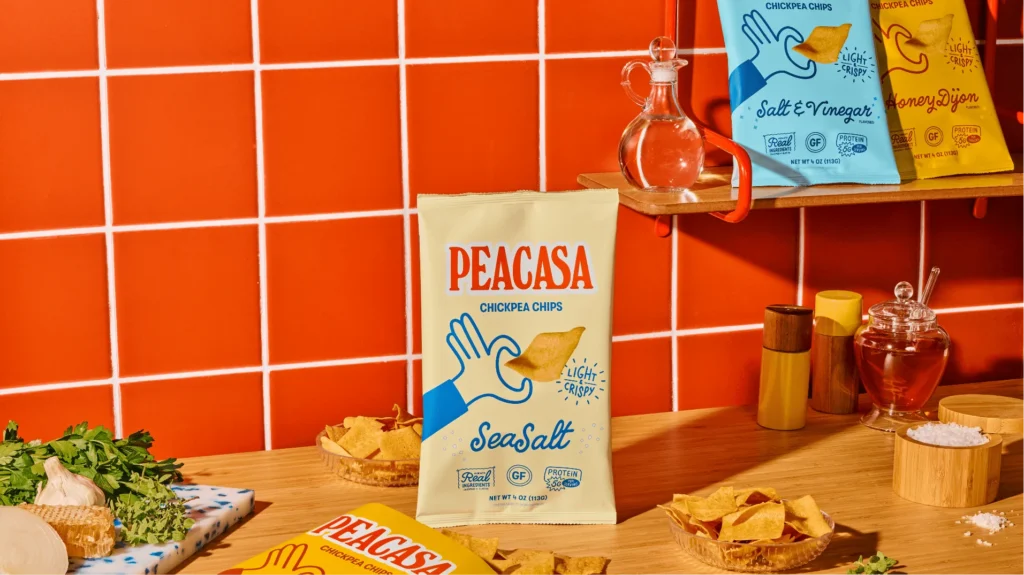What is package design testing?
Packaging design testing is the process of evaluating packaging concepts with real consumers to ensure they grab attention, communicate benefits, and influence purchase decisions. Done right, it helps brands refine logos, colors, claims, and formats before launch — avoiding costly redesigns and building stronger consumer connections.
Why Packaging Design Testing Matters
We’ve all heard the phrase “don’t judge a book by its cover.” But in reality, over half of consumers do exactly that with products. Shoppers make split-second decisions based on packaging design, whether on a grocery store shelf or an e-commerce site.
A great package design can:
- Differentiate a product in a crowded category
- Communicate key attributes like health, sustainability, or indulgence
- Reinforce brand equity and trust
A weak package design, on the other hand, can cause confusion, reduce perceived value, or even alienate loyal customers. (Remember Tropicana’s 2024 redesign, which led to double-digit sales declines because fans felt the new bottle was generic?)
That’s why testing your designs is essential — but only if you avoid common mistakes.
4 Common Mistakes in Package Design Testing (and How to Avoid Them)
Mistake #1: Testing Designs That Are Too Similar
It’s tempting to create a handful of package variations with only small tweaks — maybe a font change or a shifted logo. But this limits creativity and produces unreliable results.
Consumers might like one element of Design A and another from Design B, but if all designs are nearly identical, your test won’t uncover those preferences.
How to Avoid It:
- Create diverse mock-ups that vary in color palettes, imagery, claims, and logo placement.
- Look for trends in what resonates. For instance, Upsiide’s Idea Map revealed that consumers preferred plant-based protein packages that used green tones and natural photography to signal health.
Mistake #2: Only Testing Existing Packaging Designs
Many brands test only their current packaging or slightly refreshed versions. This risks missing breakthrough ideas and reinforces outdated visual identities.
How to Avoid It:
- Push your design team to explore bolder alternatives.
- Test concepts that play with new claims (like sustainability), fresh imagery, or unconventional formats.
- Sometimes the real barrier isn’t the logo or colors — it’s the messaging.
Mistake #3: Relying on a Single Methodology
Some brands depend on just one tool, like idea screening, to choose a winning package. The problem? Shoppers don’t choose products like this. They look at them all at the same time while they browse. They pick up the package off the shelf or click on the product page for more details. They read claims and analyze if that’s something that aligns with their needs. The experience is much more complex and composite. That’s why you need a variety of methodologies and platforms in your stack to capture this experience.
How to Avoid It:
- Use a mix of methodologies:
- Quantitative testing platforms like Dig’s innovation testing platform, Upsiide, for quick, scalable feedback
- Qualitative methods like focus groups for deeper context
- Simulated environments to replicate e-commerce or shelf shopping
Mistake #4: Narrowing Options Too Early
Cutting ideas too quickly can kill potential winners. A design that performs poorly at first may just need refinement — like adjusting logo placement or clarifying a claim.
How to Avoid It:
- Treat early test results as input, not verdicts.
- Keep a “revise and retest” list for designs with potential.
- Iterate based on consumer insights before eliminating options entirely.
How to Get Packaging Design Testing Right
To maximize the impact of your packaging tests:
- Test widely, not narrowly
- Blend methodologies for well-rounded insights
- Encourage creative risk-taking in design
- Treat testing as an iterative, continuous process
When brands take this approach, they avoid costly missteps and design packaging that truly resonates with consumers.
Success Story: How Peacasa Transformed Its Packaging With Upsiide
Peacasa, a growing snack brand, faced stalled retailer growth due to weak packaging. Their packs lacked clarity, shelf visibility, and scalability across new flavors. Key claims were hidden, and competitors stood out more effectively in the aisle.

The brand partnered with Dig Insights to run a two-phase packaging test with Upsiide. The brand evaluated full pack designs against industry benchmarks and refined hierarchy, claims, and flavor differentiation using real shopper feedback.
The results were game-changing:
- Pack redesign boosted product velocity by up to 128%
- Retailers who had previously passed came back to list Peacasa
- The brand gained a scalable packaging system to support growth and expansion
This case illustrates how rigorous packaging design testing doesn’t just improve aesthetics — it directly drives retail performance and long-term scalability.
FAQs About Packaging Design Testing
What is packaging design testing?
It’s the process of showing packaging concepts to real consumers to measure appeal, clarity, and purchase intent.
Why is packaging testing important for brands?
Because packaging directly influences buying decisions. Testing ensures designs stand out on shelf, communicate the right message, and align with consumer needs.
How do you test packaging designs with consumers?
Common methods include online idea screening platforms, focus groups, and virtual shopping environments that mimic real purchase behavior.
Final Takeaway
Packaging design testing is a process of trial and error. But once you get familiarized with these common mistakes, you’ll be able to spot them and find a way to avoid them the next time you test your packaging.
Brands that continuously test, refine, and validate their designs build stronger consumer connections, win shelf space, and reduce the risk of costly redesigns.